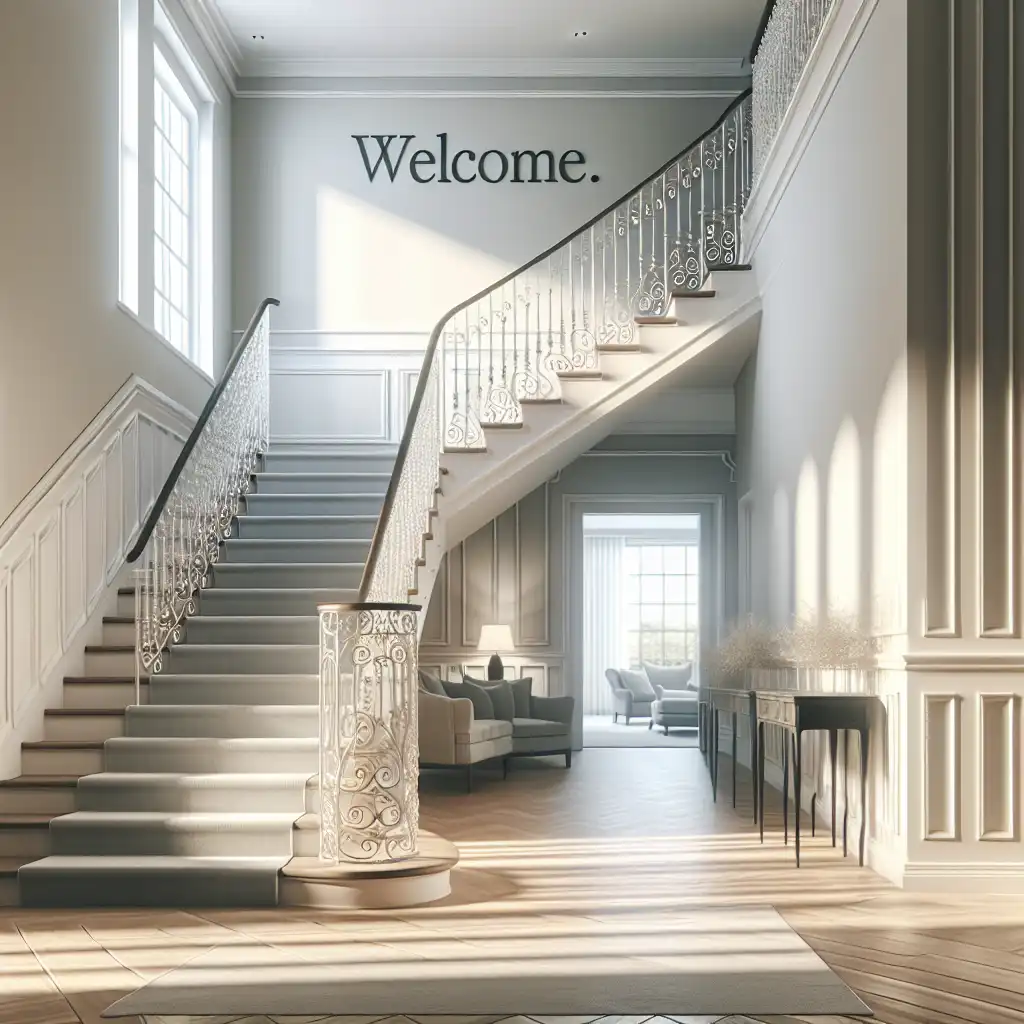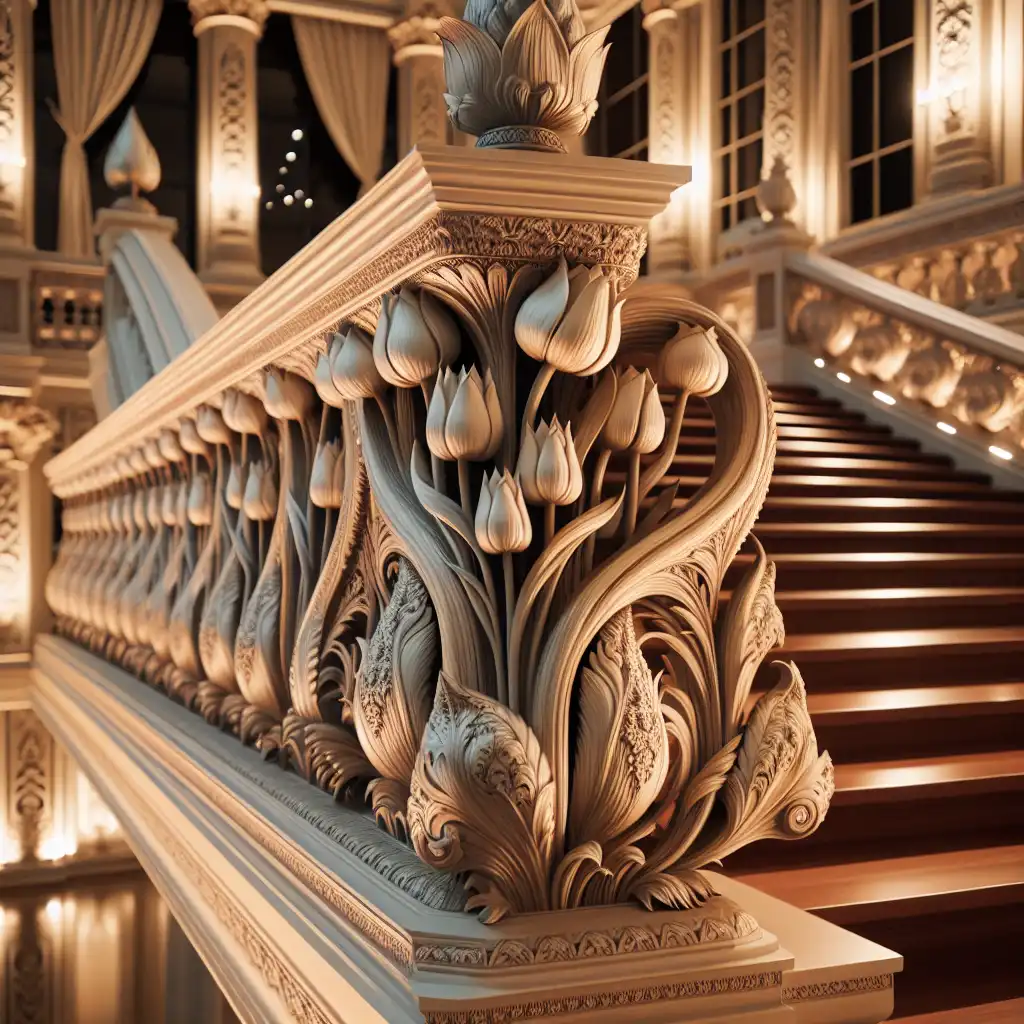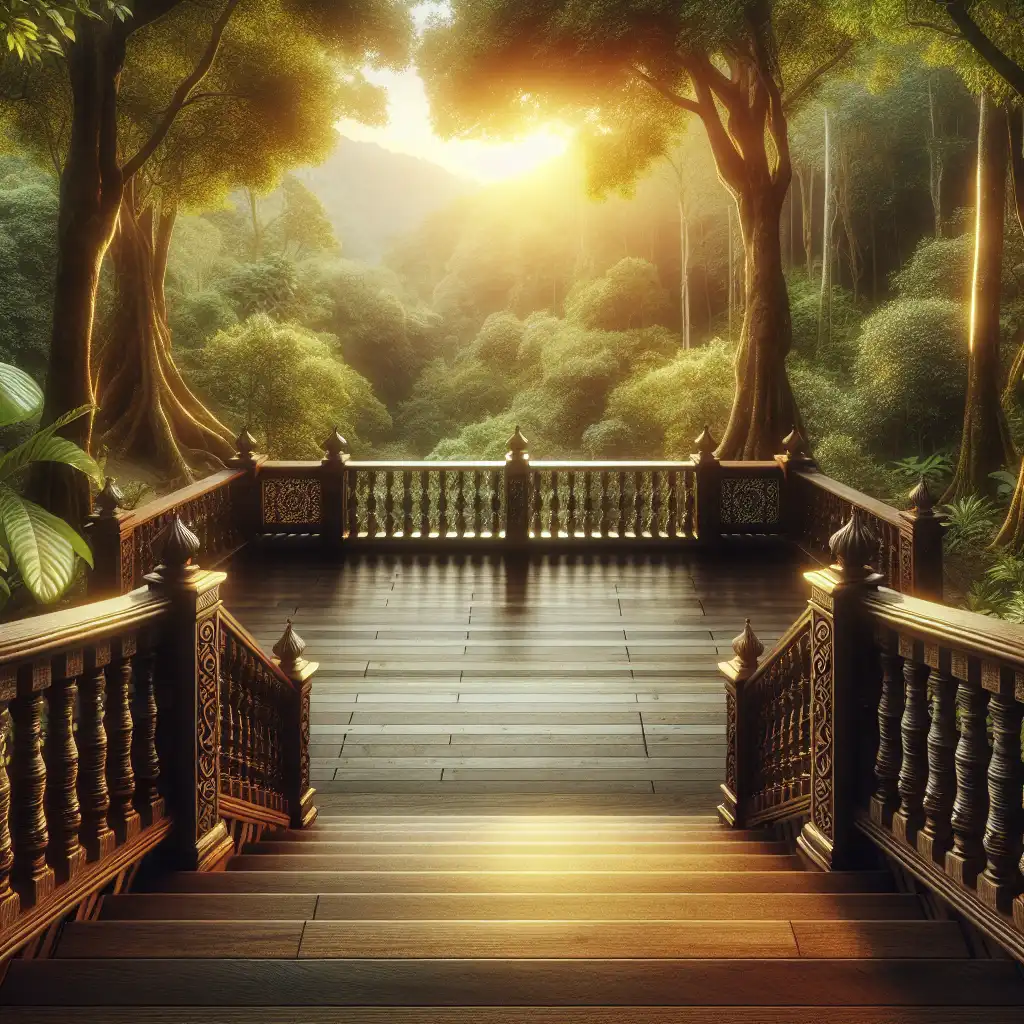
Baluster
Architecture Context
The word 'baluster' is mostly used in architecture and interior design contexts.  They decided to replace the old balusters with iron ones during the renovation.
They decided to replace the old balusters with iron ones during the renovation.
Visualize Shape
'Baluster' typically refers to vertical, vase-shaped elements; imagine an upside-down flower bud.  Each baluster in the grand hall mimicked the shape of a tulip.
Each baluster in the grand hall mimicked the shape of a tulip.
Common Materials
Balusters can be made from various materials like wood, stone, or metal, often chosen for style and strength.  The deck featured wooden balusters that complemented the natural surroundings.
The deck featured wooden balusters that complemented the natural surroundings.